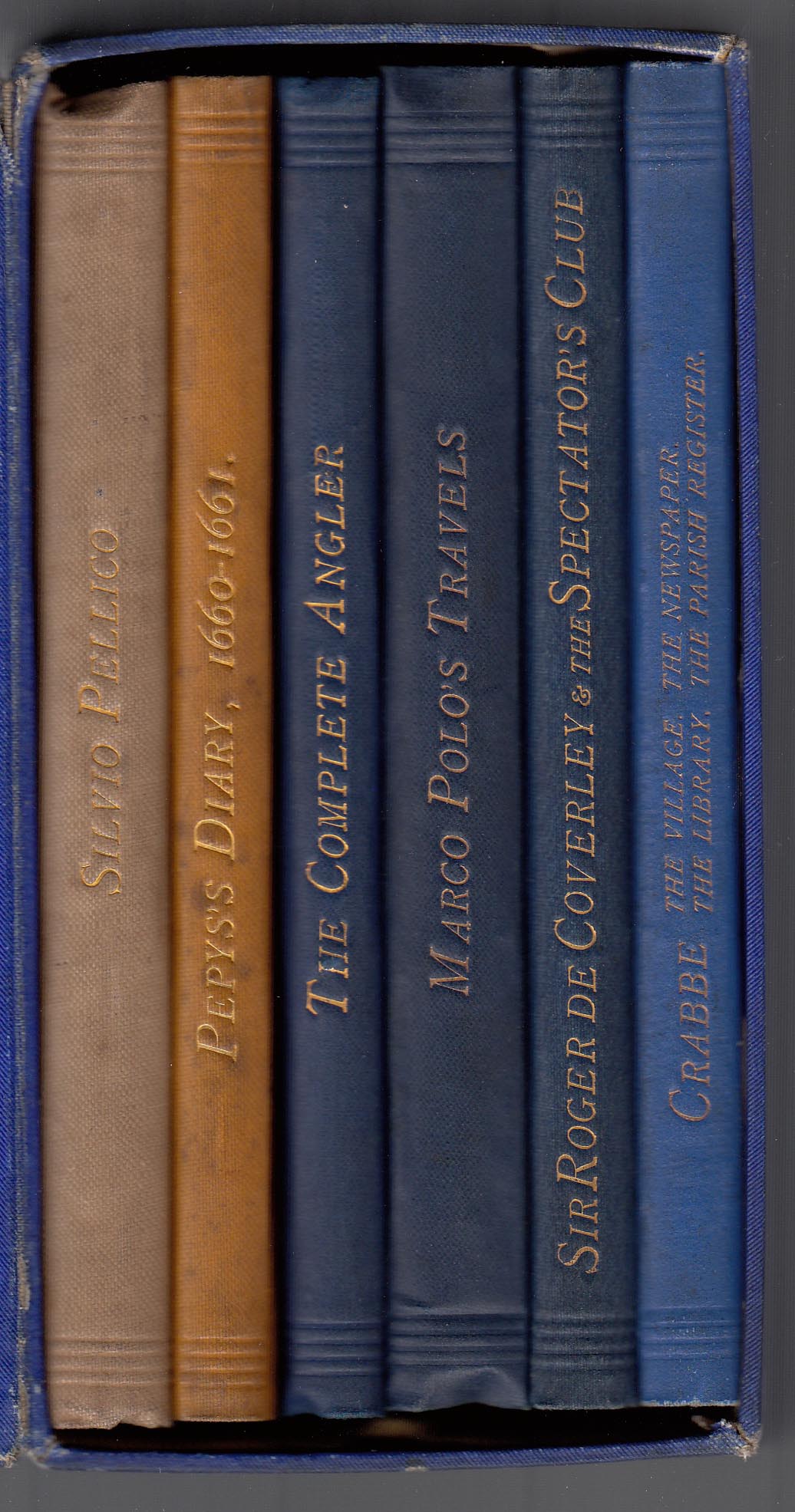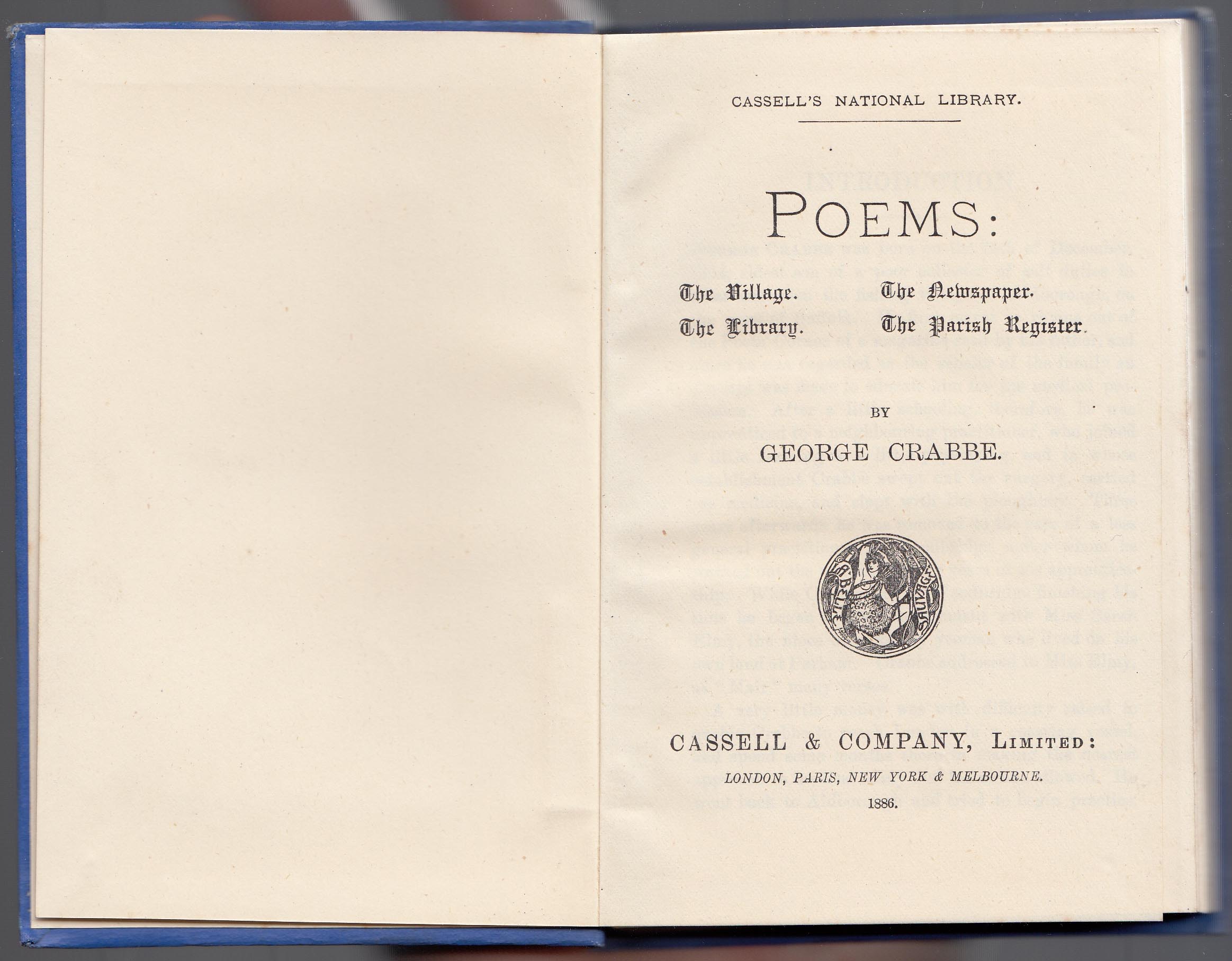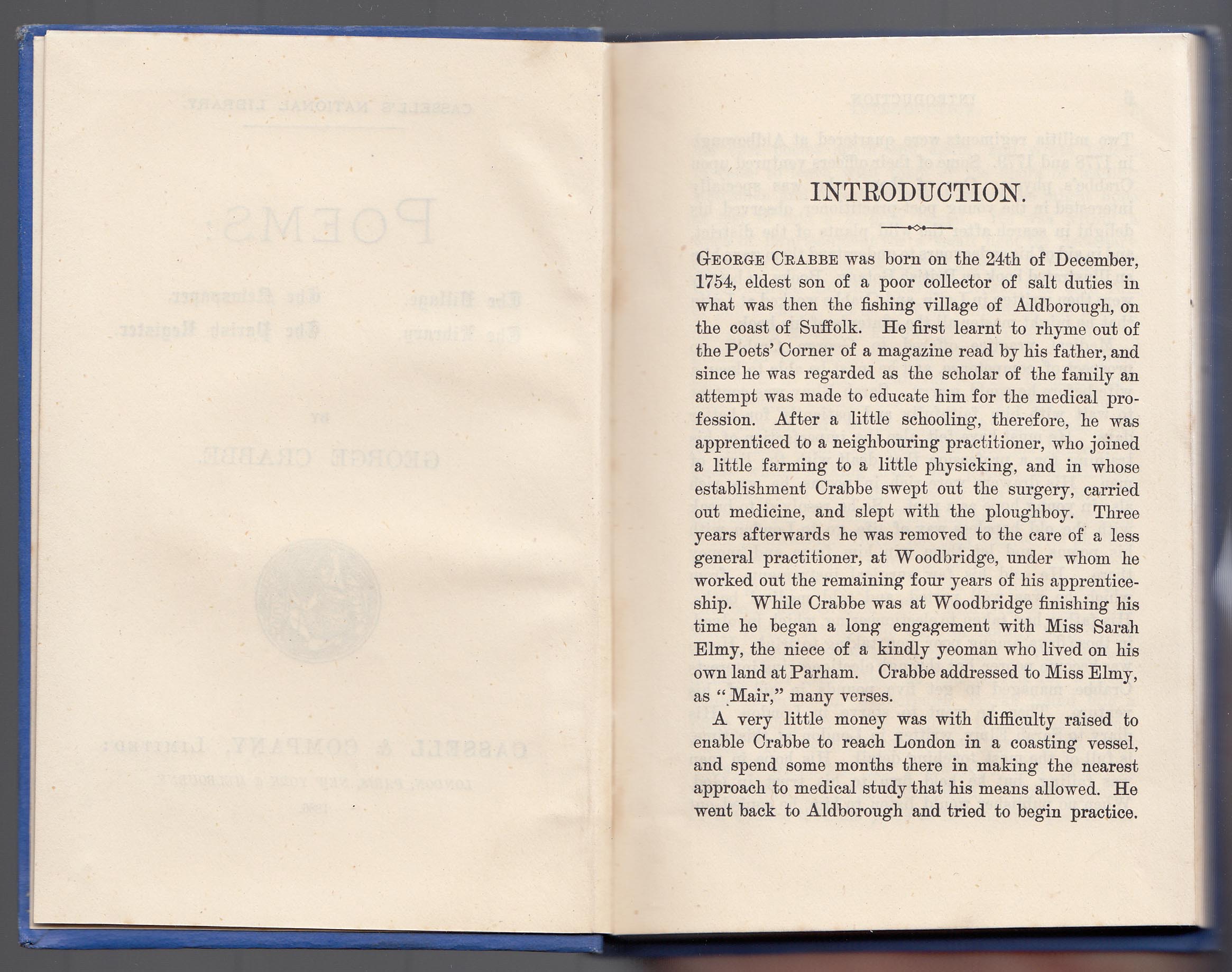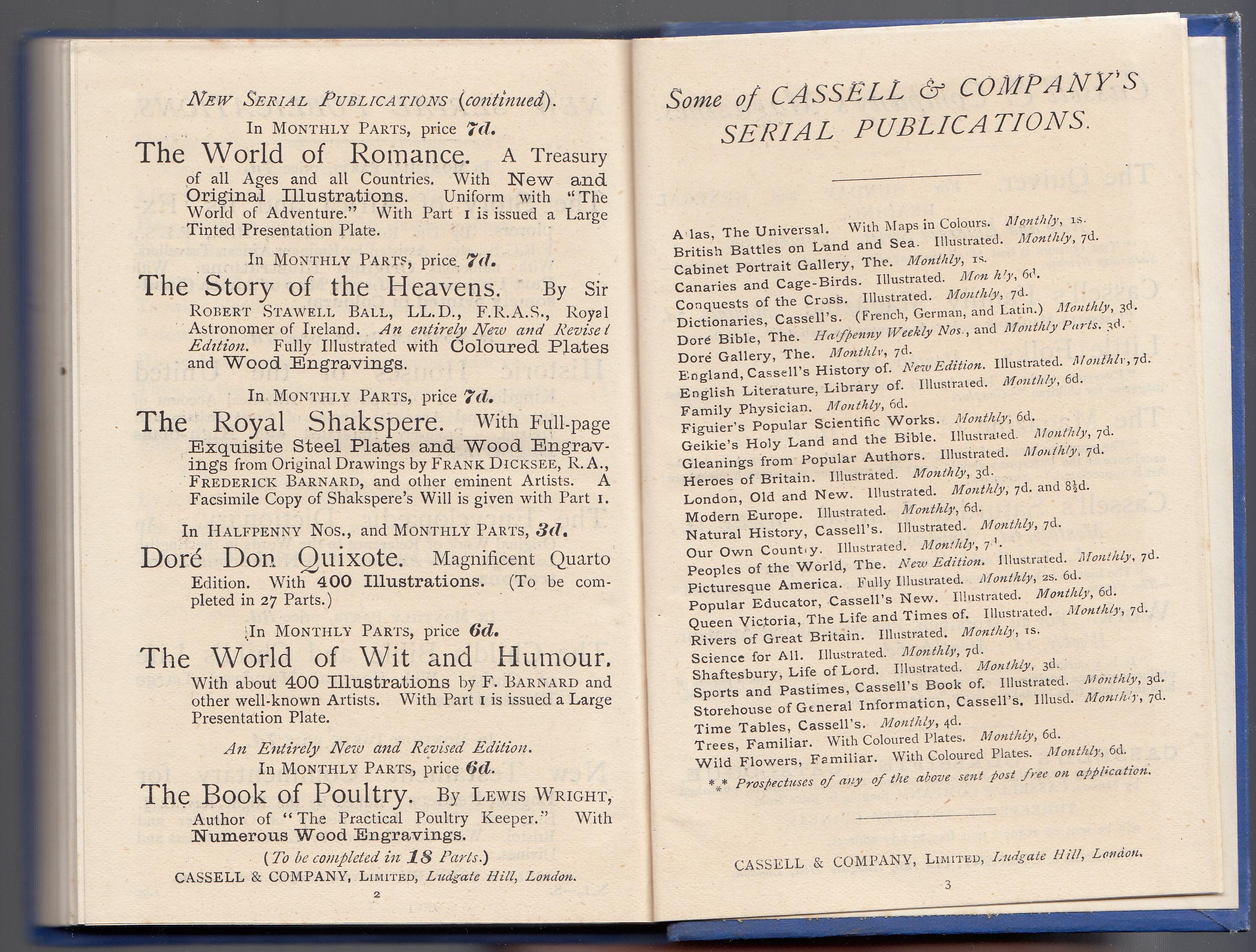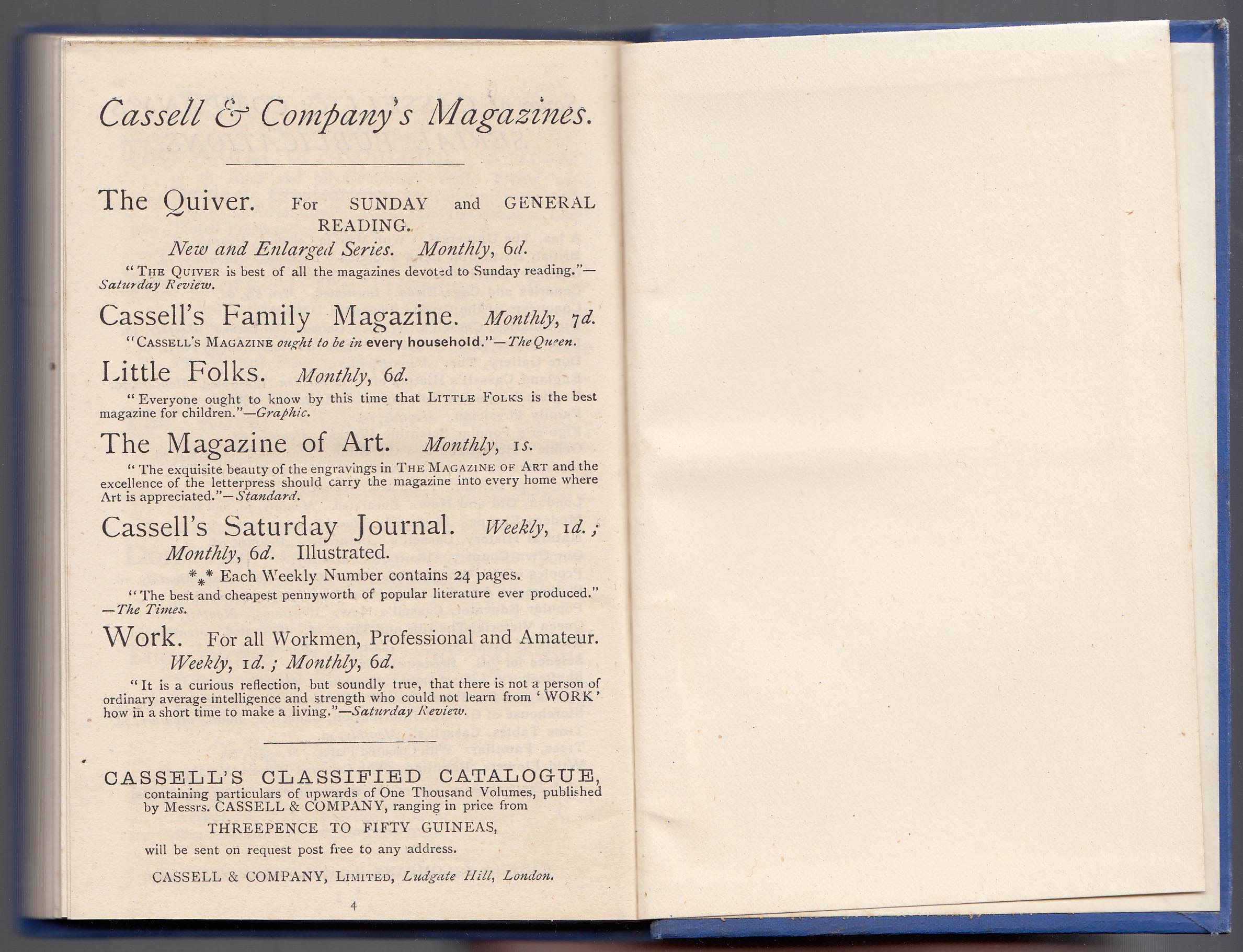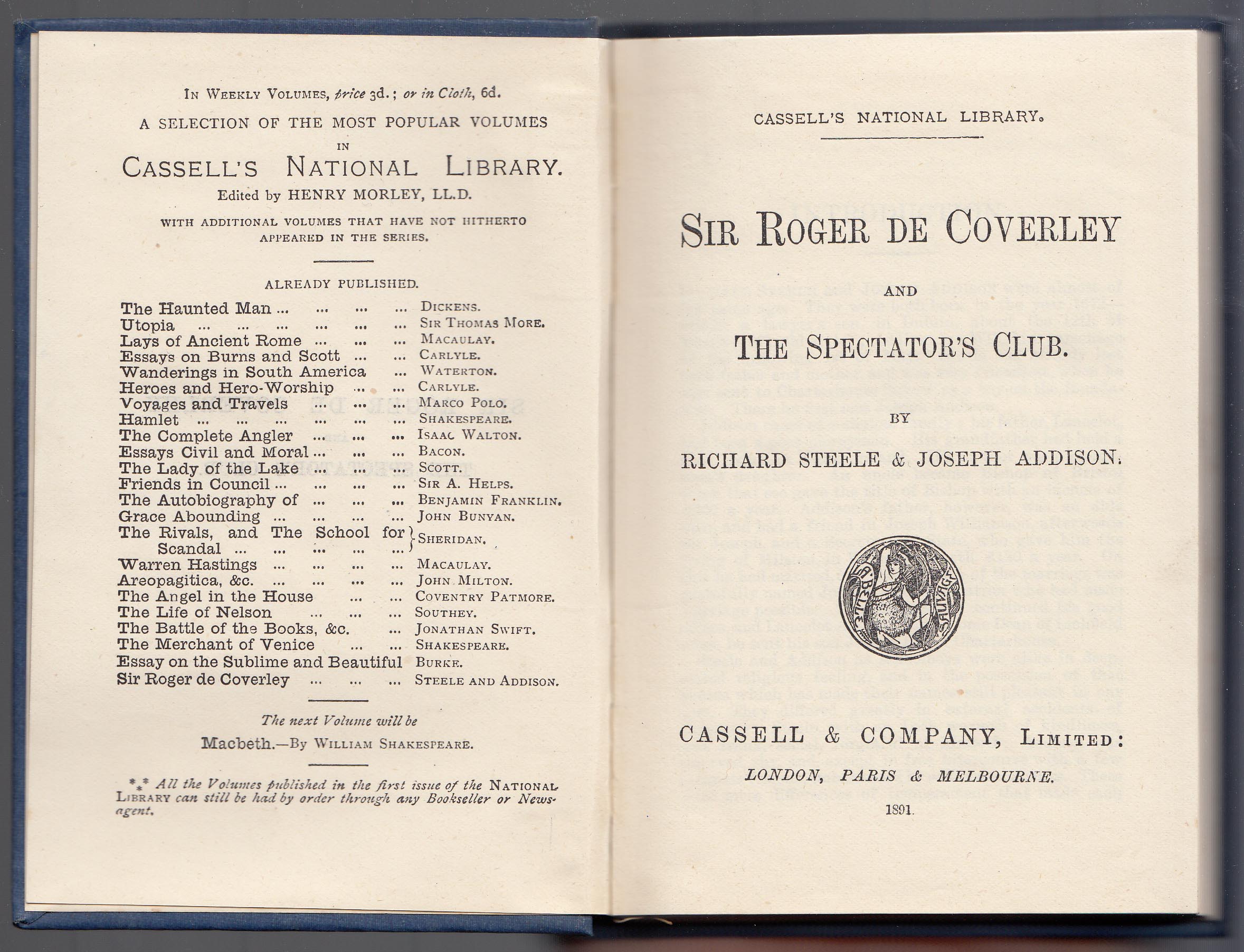Cassell & Co., Ltd. (London, UK)
Series dates: 1886-1914
Size: 3.8″ x 5.75″
Mill and factory operative John Cassell was a part-time missionary for the National Temperance Society in the 1830s when he established a coffee and tea firm to provide alternatives to alcohol. In the 1840s Cassell arranged to have the firm of William Brittain publish the Teetotal Times, a temperance magazine, and in 1848 began publishing on his own, a weekly newspaper called the Standard of Freedom. An overarching theme of Cassell’s efforts was public education, particularly for the emerging literate working classes. Cassell was also an early innovator in illustrated periodicals and developed a reputation for popularizing art.
In 1851 Cassell began publishing books with a cloth reprint of selected titles from his sixpenny monthly periodical John Cassell’s Library. Harriet Beecher Stowe’s Uncle Tom’s Cabin followed, along with a Latin dictionary. The firm moved to larger quarters in 1852. Despite good sales, the expansion led to financial difficulties and Cassell sold his firm to printers Petter and Galpin. Cassell worked for the firm as an editor and became a partner in 1858. The firm’s name changed through this process, from John Cassell (1848-1858) to Cassell, Petter and Galpin (1858-1878) to Cassell, Petter, Galpin & Co. (1878-1883). A US office opened in 1860, Paris in 1871, and Melbourne in 1884. By the time Cassell died in 1865, the firm was a success, having expanded to publish religious works, classics and travel guides. New partners were added in the 1870s and the firm changed its name to Cassell & Co. Ltd. which would remain the firm name until 1969.
Cassell & Co. continued to publish educational literature for adults as well as textbooks. Many publications were issued in weekly or monthly parts to appeal to the working class budget. The Red Library of English and American Classics was renamed Cassell’s Red Library in 1884 and sported a range of popular literary works (including Dickens, Poe, Ainsworth, Cooper, etc.).
Henry Morley, Professor of English Literature at University College, London, became an important editor for Cassell. His focus was on popularizing literature, and he applied Cassell’s serial publication approach to a vast range of literary works. Morley edited the popular Cassell’s Library of English Literature, which consisted of summaries and edited literature with commentary, issued in sevenpenny parts then sold in clothbound form.
Morley “scored yet another success for Cassell with Cassell’s National Library, published from 1886 to 1890 in weekly parts selling at three- or sixpence each, depending on the quality of binding. Like most of Morley’s endeavors, the National Library cast its net widely, taking in ‘Standard Works in every Branch of literature, including travel, biography, history, religion, science, art, adventure, fiction, drama, belles lettres, and whatever else may be worth lasting remembrance.'” The titles were sold in the U.S. for 10 cents (paper) and 20 cents (cloth).
Quote and source for the above section “Cassell and Company Limited.” Dictionary of Literary Biography: British Literary Publishing Houses, 1820-1880. Ed. Patricia Anderson and Jonathan Rose. Vol. 106.
Lists of the titles in Cassell’s National Library can be found at Publishing History (208 titles) and Edward T. LeBlanc Dime Novel Bibliography project (214 titles). Besides the different number of titles, there are a few other discrepancies in the two lists (which may be due to differences between UK and US titles in the series).
The box below holds six titles from Cassell’s National Library series. Paper and clothbound titles were issued weekly between 1886 and 1890. Reprinted titles seem to have been issued for several decades beyond the initial publication years. Titles were also available in collections such as this box and wooden bookcases holding up to 50 titles. This box was presented as a school prize in 1891 (see below). The blue cloth box is of heavy cardboard with the series name printed in gold and has an interior ribbon which can be used to dislodge the books.
The books in the box are clothbound and apparently not issued with jackets. I can find no instance of a title from Cassell’s National Library series with a jacket. My assumption is that the low cost of these small books was achieved in part by eschewing dust jackets (which were, nevertheless, a common fixture on clothbound books at this time).
The bottom of the box includes a prize label from the School Board for London. In this case, the award was to William Barker “for attention to his studies” in evening courses in 1892. This box, then, is suggestive of Cassell’s role in promoting adult literacy.
Titles in this box (with publication year from book) include:
#2. My Ten Years’ Imprisonment, by Silvio Pellico (1886)
#5. The Complete Angler, by Isaac Walton (1891)
#20. Poems, by George Crabbe (1886)
#29. Sir Roger de Coveley & the Spectator’s Club (1891)
#30. Voyages and Travels, by Marco Polo (1886)
#33. The Diary of Samuel Pepys (1660-1661) (1891)
The five titles are all clothbound in tan, orange, dark and navy blue cloth. This style of binding can be contrasted to what seems to be a more common binding with more decorations on the covers. It’s possible that paper and clothbound titles that were sold individually had the more complex cover designs.
Debossed lines appear at the top and bottom of the front and back cover, along with the title and author (on the front) and a publisher’s colophon (on the back). The author and title are printed in gold on the book spine.
There is no half-title page. The title page is headed by the series name. This book is dated 1886 under the publishers’ imprint. It’s possible that reprints did not change the publication year.
The back of the title page is blank.
“Printed by Cassell & Company, Limited, La Belle Sauvage, London, E.C.”
All five books in the box have publisher advertisements in the back, including serial publications and periodicals in this case.
Facing the title page of Soir Roger de Coverley and The Spectator’s Club is a series prospectus with prices of 3d. in paper, or 6d. in cloth.




